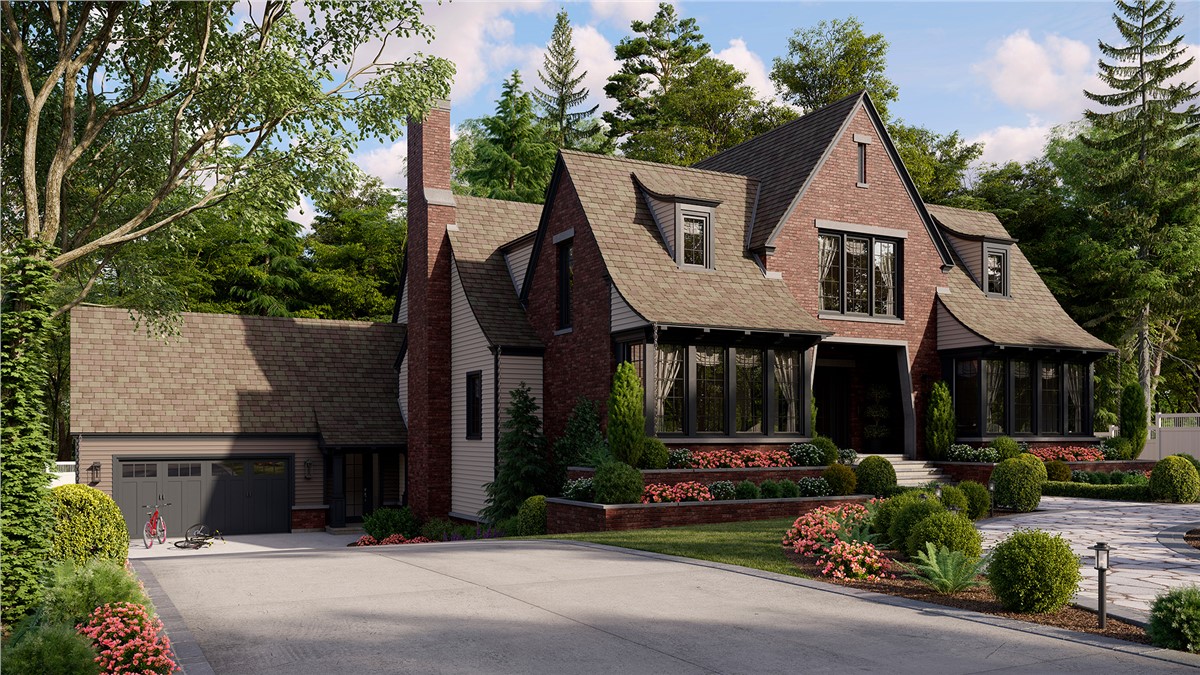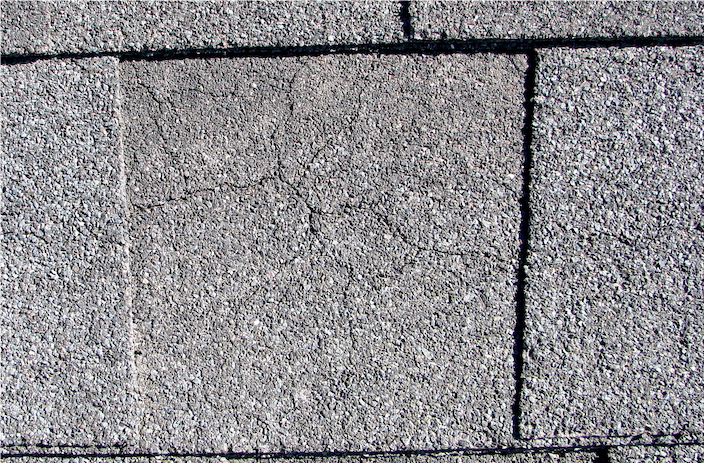Proper ventilation of your attic has many benefits for the health of your home and your family. Studies done in recent years has prompted the building codes to require ventilation in every region of the United States, and all asphalt shingle manufacturers will not issue warranties without it. Proper ventilation will:
- Help prevent ice damming in the winter. In freezing temperatures during the day, if the attic temperature is more than 15 degrees warmer than the outside, snow will melt at the higher areas of the roof where heat accumulates in the attic, and refreeze when it cools off by the eaves.
- Help extend the life of your roof shingles by keeping the roof cooler in hot weather
- Help reduce cooling costs by allowing the heated air to circulate out of the attic.
- Help prevent moisture build-up and the growth of mold and mildew that can affect your family’s health and rot the framing and sheathing causing expensive damage.
How does venting work to let your attic “breathe”?
We need to breathe to get fresh air in and out of our bodies. For similar reasons, your attic needs to breathe also. While we have an active process, most homes have a passive venting system which requires a balance between the intakes and outlets. Intakes and outlets are placed strategically to allow for the greatest amount of air circulation. As hot air rises, intake vents are placed at lower points of the attic with outlets higher up. As the hotter air escapes through the outlet vents, it creates a minor vacuum that draws in fresh air through the lower intake vents.
Powered vents can also be used. These vents use electric-powered fans to force air through the vents at a much higher rate than passive vents.
- Intake Vents in modern homes are typically located in the Soffits under the eaves. Older homes may have been outfitted with either starter vents or circular vents.
- Starter Vents are installed when the eaves atop at the wall and don’t overhang to allow for soffits to be installed.
- Circular vents are installed when eaves exist without room for soffits. These vents are installed directly into the blocking between the exposed rafters.
- Outlet Vents allow the air to escape from your attic and are installed at a higher elevation. Roof vents, ridge vents and gable vents are used as outlets in the attic.
- Roof Vents are water tight units made of light gauge metal or plastic and are installed directly into the roof system. They come in various styles and colors and range in size from 60-90 square inches per vent.
- Ridge Vents are installed along the top ridge of your home, where the two slopes meet, capping the top courses of shingles. A sufficient opening should be made in the sheathing to allow the vent to work without compromising the watertight integrity. Ridge vents are the least conspicuous of all venting solutions; they are usually the same color as the shingles, are held back from the gable ends of the house to provide the best aesthetic look and to protect them from wind-driven rain, and sometimes they are covered by ridge shingles. While a lower profile ridge vent may be chosen for aesthetic reasons, it should be chosen to ensure the best air circulation first and foremost.
- Gable Vents are installed in the attic at each end, or gable, of the house. It is typically a louvered vent cut and installed directly into the siding. Not only are gable vents the most effective passive vent, they are also the least likely to leak when it rains, although a small amount of wind-driven snow may pass through the vent grills.
How much venting do you need?
The size and placement of vents depends on the roof configuration and the size of the attic. The commonly accepted calculation for sizing vents is 1 square foot of vent opening to 175 square foot of attic area. In most cases, the more vents the better. This is true for most climate regions, except for extreme cold areas where concerns for allowing too much cold air into attic can present problems. These areas should calculate vent sizing at 1 square foot of vent opening to 200 square feet of attic area.
Placement of attic vents should be determined by the size and shape of attic area. Care should be taken to verify that the vent locations will vent all attic areas. If sheathing or fire stopping blocks off an area of the attic, additional vents are recommended.
What types of vents are right for my home?
Every home is different when comes to determining what type and how many vents you need for optimal ventilation of your attic.
Most modern homes have soffits for intake vents because they offer the best circulation per square footage of venting needed. Although, gable vents can be used for intake depending on your home’s design. A combination of roof vents, ridge vents and gable vents can be used to create the best overall outlet circulation.
Should you install powered vents?
Power vents use a fan to force air through the vent. There are powered roof and gable vents available. Some use electricity and others are solar-powered. Most are thermostatically controlled, set to run when the attic temperature reaches a defined temperature and stop when the air cools by a predetermined amount (usually 15 degrees).
Power vents have both benefits and drawbacks. If you are having difficulty cooling your attic with passive vents due to architectural design, lack of venting options, and/or too many problems are causing heat to enter the attic, powered vents are a good option and possibly your last resort without making drastic changes to your home’s design.
Drawbacks; you’ll need a licensed electrician if you plan on installing an electricity-powered vent, and your electric bill will increase. If you use the powered vent in the winter you may increase the chances of forming an ice dam. If you don’t have an air tight attic, the vent may pull warm air up from below, increasing the heat in your attic which can cause snow to melt faster near the top of your roof. The snow melt can then refreeze near the end of the roof (the eaves) forming an ice dam.
How do you know if you’re having venting problems?
A thorough inspection of your attic space should be done to determine if you are having any problems that can be attributed to poor venting.
Check for frost on the underside of the roof or on the rafters. This is caused by warm, moist air that has been trapped, has condensed and subsequently frozen on the wood.
- Look for water-stained or blackened wood, signs of mildew, mold, or rot.
- Check for rusted nails or other metals. This is also a sign of condensation.
- Is there any matted down insulation? This is a sign of a roof leak from ice damming or other damage to your roof.
What are common causes of poor attic venting?
- Vent Blockage. Insulation can be improperly installed and covering soffits or roof vents. Sometimes aluminum or vinyl soffits have been installed over plywood soffits that don’t have vent holes. Also check to see that an animal hasn’t built a nest inside a vent.
- Improperly Installed Vents. Ridge vents require about 2” cut away on each side of the ridge board to allow for maximum circulation.
- Not Enough Vents. Some homes simply need to have more vents added. Some homes were built without ridge vents or roof vents. Either the contractor wasn’t aware of the need or the home is older and it wasn’t available at the time. Even installing a larger gable vent can make a difference.
- Kitchen and bath fans vent directly into the attic. This can be solved venting them through the roof. Never vent them through the soffits because this warm, moist air can be drawn back into the attic through the neighboring soffits.
Special Conditions
Properly venting above a cathedral ceiling is more difficult than a typical attic. The framing of a cathedral ceiling creates individual plenums between each rafter, every one of which should be vented. To properly vent there must be a minimum of 1½” between the underside of the sheathing and the top of the insulation to allow for air flow. Each individual plenum must connect to an intake vent and an attic vent. For a cathedral ceiling, the vent types most easily connected to each plenum are a soffit vent (intake) and a ridge vent (outlet).
Can venting reduce your air conditioning costs?
Some ridge vent manufactures claim that adding a ridge vent can reduce air conditioning costs with the additional ventilation. While a properly vented attic does lower the attic temperature, the only way to dramatically lower the attic temperature is with a power vent. However, when the cost of running the power vent’s fan is calculated against the savings in air conditioner power consumption, the net savings in energy can often be short of what is claimed.
What are your best solutions for creating a well-ventilated attic?
Make sure that your shingle manufacturer’s guidelines and building codes are followed for proper attic vent design and layout. This will reduce the amount of condensation and excess heat that can build up leading to a longer life for your roof shingles and sheathing. Also, the proper ventilation will help remove the excess heat in the winter, and reduce the chances of forming an ice dam which can backup into your attic causing water damage, mold and rot.
How can Stan’s Roofing & Siding help you ventilate your home?
Roof Services has been installing and repairing roofs for over 45 years in the Chicagoland area. Ventilation systems are a regular part of the roof installation process.
Free Consultation and Quote
If you suspect that you are having a ventilation problem, give us a call. We’ll inspect your attic, roof and ventilation system and determine what needs to be done to make your home safer and healthier.
We’re committed to providing you with the highest quality installation, service and support so you can experience the greatest life expectancy from your roof. We’re fully insured and bonded to protect your home or business.
Tags
Subscribe to Stan's Roofing & Siding's Blog








Comments